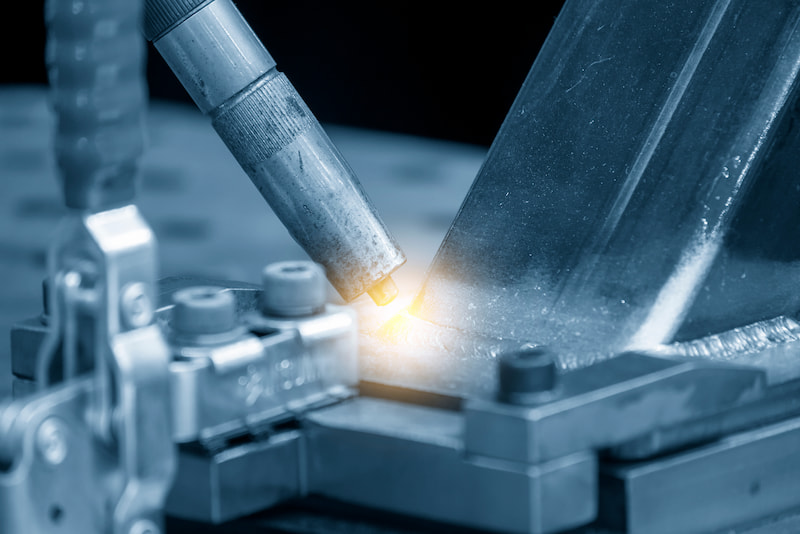Understanding Laser Beam Welding

Laser Beam Welding: At its core, laser beam welding employs a highly concentrated laser beam as its heat source. The principle behind LBW is straightforward yet effective: the laser beam is focused on a small area, which rapidly heats the material to the melting point, creating a molten pool. As the laser moves along the joint to be welded, the material cools and solidifies, forming a strong weld. The process can be performed in either a pulsed or continuous mode, depending on the specific requirements of the application.
Advantages of Laser Beam Welding
Precision and Control: One of the standout benefits of LBW is its precision. The ability to focus the laser beam on a very small area allows for detailed work on minute components, which is particularly beneficial in industries where precision is paramount, such as in medical device manufacturing.
Speed: LBW is significantly faster than traditional welding methods. This efficiency is due to the high energy density of the laser beam, which can quickly heat and melt the material.
Versatility: Laser beam welding can be used on a wide range of materials, including but not limited to steel, aluminum, and titanium. It can also join dissimilar materials, which is often challenging for other welding techniques.
Reduced Heat Damage: The localized heat input results in minimal warping and distortion of the workpiece, preserving the integrity of the material and resulting in high-quality welds.
Applications of Laser Beam Welding
The versatility and efficiency of LBW have led to its adoption in numerous sectors:
- Automotive Industry: In automotive manufacturing, LBW is used to join lightweight materials, contributing to the production of vehicles that are both sturdy and fuel-efficient.
- Aerospace Sector: The aerospace industry benefits from the precision and strength of LBW for critical components, where weld integrity and weight reduction are crucial.
- Electronics: For the electronics industry, the ability of LBW to work on small scales makes it ideal for assembling components with high precision.
- Medical Devices: The need for sterile, precise welds in medical devices is met by LBW, ensuring the reliability and safety of these critical tools.
Challenges and Solutions
While laser beam welding offers many benefits, it also presents unique challenges. The initial cost of laser welding equipment can be high, making it a significant investment. Additionally, the technique requires skilled operators to achieve the best results. However, the return on investment can be substantial, given the increased efficiency, speed, and quality of welds produced by LBW. Advances in technology and training programs are continually addressing these challenges, making LBW more accessible and cost-effective for a wider range of applications.
The Future of Laser Beam Welding
The future of laser beam welding looks promising, with ongoing advancements in laser technology enhancing its capabilities. Innovations such as fiber lasers and advancements in laser power and efficiency are opening new possibilities for LBW applications. Furthermore, the integration of LBW with digital and automated technologies is paving the way for more intelligent manufacturing processes. As industries continue to seek more efficient, reliable, and precise welding solutions, the role of laser beam welding is set to expand, driving forward the boundaries of manufacturing and engineering.
Conclusion
Laser beam welding represents a significant leap forward in the field of materials joining. Its precision, speed, and versatility offer substantial benefits across a wide array of industries. While there are challenges to overcome, particularly in terms of cost and operator skill. The future of LBW is bright with the potential for further technological advancements and applications. As we move towards more advanced manufacturing processes, the role of laser beam welding as a key technology is undeniable, marking it as a critical tool in the evolution of modern manufacturing and engineering practices.




